Pillars of Sabah in Kota Kinabalu is a unique concept. This is a place where art has been used effectively to create something meaningful. Located at the heart of Kota Kinabalu town, the Pillars of Sabah is an inspiring community art project aimed to highlight the issues important to Sabah. In our recent visit to Kota Kinabalu, we visited Pillars of Sabah 2.0 and found it to be quite fascinating. The colourful pillars also make it an Instagram worthy place in Kota Kinabalu. These pillars depict 30 threatened wildlife species of Sabah painted on the pillars by 30 artists through a community project.

Art can bring a revolution. The artist can express his thoughts through his creations that can create a more powerful impact than mere words. Graffiti and street arts often create powerful messages apart from being pleasing to the eyes. As we wander around various places, both of us make it a point to look for street arts and graffiti in a city. They tell a thousand words about the people, culture and the place. This time at Kota Kinabalu too, we were quite impressed with the Pillars of Sabah. Not only because they were wonderful pieces of artwork, but also the concept behind them is very singular and important to Sabah.
When we came to know about this place, we knew that we have to visit here. The site is located just opposite the Surya Sabah Mall, an important landmark of Kota Kinabalu city. But not much people visit there. We heard from a few locals in our hotel that the tourists prefer to visit the other attractions of Kota Kinabalu. Early morning, we just grabbed a Grab Car and came to the place.
The pillars were hard to miss. We could see them from a distance and I was quite excited to just cross the road and see them. but, by the time, it started raining. So getting drenched in the rains, we took a few pictures of the pillars and marvelled at the art created to spread awareness on such a vital issue of wildlife conservation.

What are Pillars of Sabah?
Pillars of Sabah is basically an art project, the brainchild of local artist Red Hong Yi. She is quite well known internationally as someone who creates art with simple things that are found at home. The Pillars of Sabah was created in an abandoned site in the heart of Kota Kinabalu city. The building was initially a pre-World War II Land and Survey Building. This heritage building was later converted into the Social Welfare Department and then into an office for the Society of the Blind. In 1990, it was planned to convert the building into an art gallery. But before it was materialized, the building was totally ruined by a devastating fire in 1992. So bad it was that only the foundation of the building and around 30 pillars facing the open sky was all that was left!
And it was in this abandoned and derelict site, Red Hong Yi decided to turn this into a display of artwork. In September 2018, Pillars of Sabah 1.0 was created. This one focused on the various personalities who had played a significant role in the development of Sabah and Sabahan personalities who have achieved success. Hong Yi along with another local filmmaker Jared Abdul Rahman recruited 20 professional and new artists to participate in the project. Each artist was given a pillar on which they would create their art. They painted the portrait of people who have contributed to Sabah considerably and inspired them. They launched Pillars of Sabah on September 16, 2018 which is also Malaysia Day.

Pillars of Sabah 2.0
Pillars of Sabah 2.0 is the second project by Hong Yi and Rahman where the 30pillars were revamped and was launched on March 30, 2019 in conjunction with the Earth Hour 2019. This time another 30 Sabahan artists came together to highlight 30 threatened wildlife found in Sabah and its rainforests. The project is supported by the Tourism and Cultural Ministry of Sabah as well as WWF-Malaysia. The animals are portrayed and painted in the individual style of the artists. The main aim of this project was to raise awareness about these threatened species, and also the “various issues that threaten not only these selected animals, but biodiversity conservation as a whole both locally and globally”.

The featured animals include the Sunda pangolin, Dugong, Bornean Crestless Fireback, Hose’s Palm Civet, Proboscis Monkey, Sunda Clouded Leopard, Hawksbill Turtle, Green Turtle, North Borneo Gibbon, Corals, Bornean Slow Loris, Bornean Bay Cat, Bornean Bristlehead, Banteng, Black-Headed Pitta, Hornbill, Horsfield’s Tarsier, Pelagic Thresher Shark, Manta Ray, Whale Shark, Bulwer’s Pheasant, Borneo Beaded Pig, Flat-Headed Cat, Sumatran rhinoceros, Horseshoe Crab, Bornean sun bear, Irrawady dolphins, Binturong, corals and Bornean pygmy elephant.
Wildlife is an integral part of the ecosystem and has to be protected. The Pillars of Sabah 2.0 is a place where art and colours come live to spread awareness on important issues. Also, this place happens to be one of the most Instagram worthy places in Kota Kinabalu. So on your next trip to KK, take a visit to the Pillars of Sabah. I am sure, the pillars will be again repainted and new art will be created soon. Till then, see these animals would rule the pillars. Believe me, they really look cute.

How to reach Pillars of Sabah
The Pillars of Sabah is just opposite to the Suria Sabah Mall, an important landmark in Kota Kinabalu. Just hop on to a Grab Car and reach there. The I Love KK point is just a walkable distance from the pillars. You take just take a trip there and get some pictures clicked.
Please note, for those who love graffiti and street art: There are some beautiful street arts painted on the walls just nearby the Pillars of Sabah. If you want you can walk around a bit and take a few pictures. We could not do it as it was raining quite heavily at that time.
Meet a few animals from the Pillars of Sabah
Horsfield’s Tarsier
This is Horsfield’s Tarsier. tarsiers are nocturns that can turn their heads 360 degrees to survey their surroundings and prey on insects. They can also jump backwards in perfection just like ninjas. They get traumatised by loud noice and touch and commit suicide if kept in captivity! This was painted by Teo (Firdaus) of Sabah.
Doesn’t it look like some mythical character straight out of a Harry Potter movie?

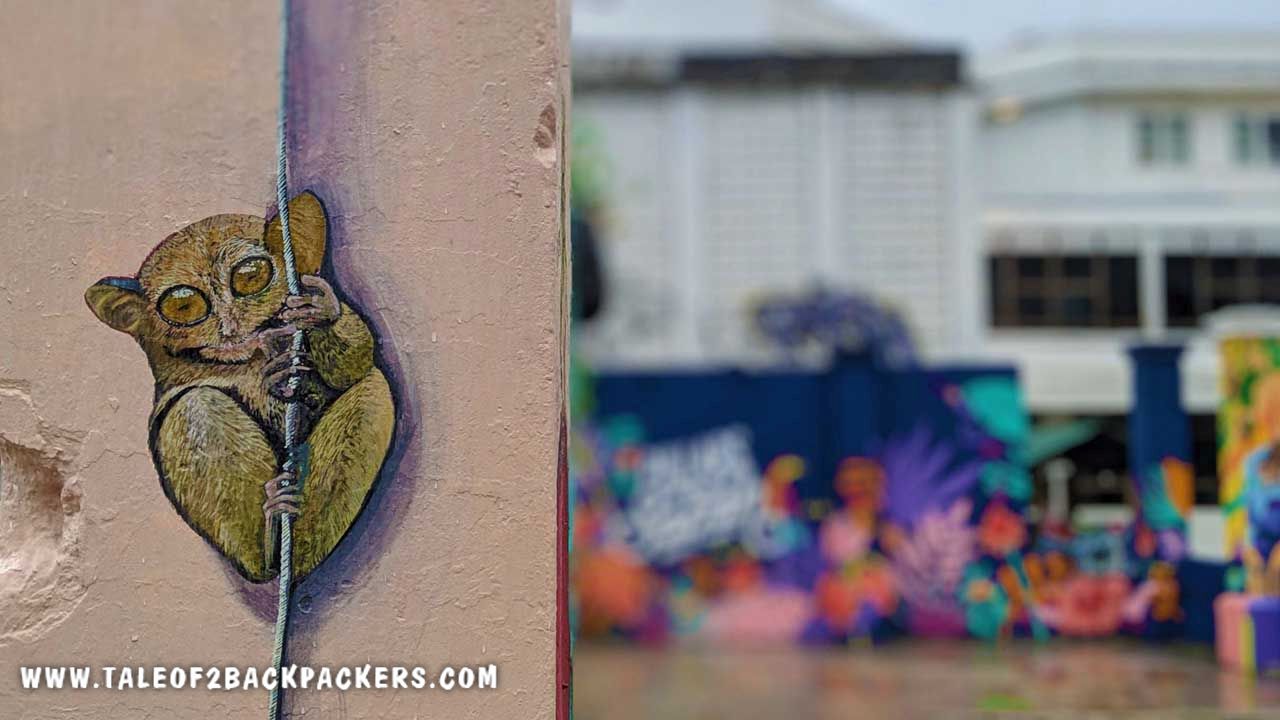
Binturong
This is Binturong or bearcat. It is a fruit-eating carnivore that lives in the canopies of Borneo rainforests. Their population is slowly declining due to deforestation, habitat destruction, wildlife hunting and trading. They are classified as vulnerable. It is one of the only 2 animals having digestive enzymes capable of germinating seeds of a Strangler fig tree. These trees make up a critical portion of the rainforest ecosystem. Without Binturongs the forest ecosystem would be heavily disbalanced. The artist here is Lee Kah Yee.

Dugong
Don’t they look really cute and very kissable? But these cute dugongs were hunted from small boats using harpoons and nets. Their meat is considered a delicacy and their tusks were used as fashion tool handles. But now these animals are protected species under Malaysian laws. Dugongs are quite friendly and tame animals. The artwork is done by Nosarine Abdul.
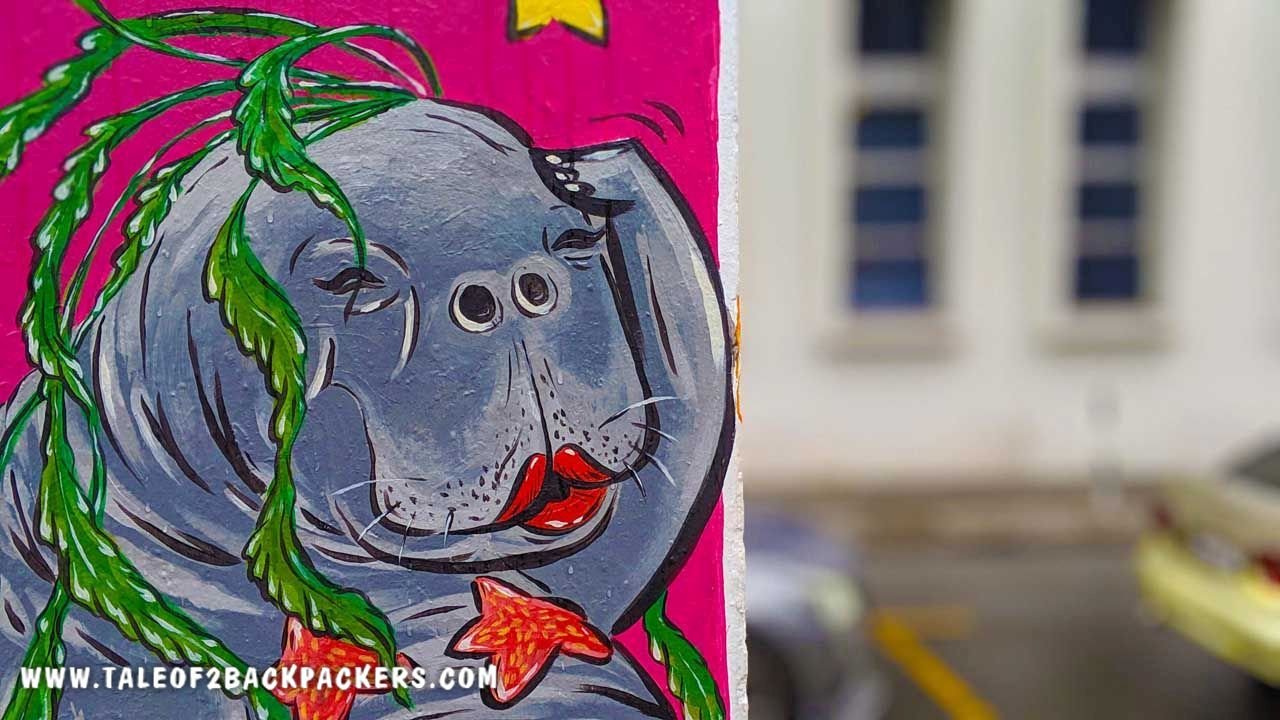
Corals
Corals are threatened in many parts of the world. It is heartening to see Sabah has taken corals into consideration.

Sunda Pangolin
Pangolins of equatorial Africa and Asia are supposedly the most illegally traded wild mammals on the planet. The Malaysian Sunda Pangolin are declared critically endangered and is a protected species under Malaysian laws. Eating pangolin body parts that are considered as exotic food is also seen as one of the prestigious things. Their scales too are used as raw materials for making handicrafts. Hope the protection stop illegal hunting and trading and prevent its extinction

Bornean Sun Bear
Sun bears are cuteness overloaded. And just see their swag in the graffiti! As the smallest bear in the world, Bornean Sun Bear looks just like a walking teddy bear. Their cubs are really adorable and are often kept as pets by many people. This actually becomes a bane for them because they lose their ability to survive in the wilderness when they are kept as pets. Sun bear is a favourite target of poachers because of its highly-priced gall bladder. At Sepilok, you can visit the Bornean Sun Bear Conservation Centre where these bears are rehabilitated.

Borneo Pygmy Elephant
These are the smallest sized Asian elephants. The pygmy elephants are baby faced with oversized bellies, plump bellies and tails and are gentler in nature.

Borneo Proboscis Monkey
This reddish-orange monkey is named after its huge pendulous nose found only in Borneo island of Southeast Asia. They are listed as Endangered on the IUCN Red List. Their main threats are habitat destruction ad hunting. Sabah is one of the best places to see these monkeys on wild.

A few more pictures…




YOU MAY ALSO LIKE : GUIDE TO THINGS TO DO IN KOTA KINABALU, SABAH
Did you like this post? Did you find it interesting and inspiring? Please let us know your thoughts by commenting below. Please share the post and create awareness about wildlife conservation. Pin it for a later read.
Discalimer: We were invited to Kota Kinabalu, Sabah by Travel.Earth in association with Sabah Tourism, Malaysia Tourism for the Travel.Earth Digital Travel Influencers Convention & Earthy Awards 2019. We flew from Kolkata to Kuala Lumpur and then further to Kota Kinabalu via AirAsia. We explored in and around Kota Kinabalu with Exotic Asian Explorer (Surego Borneo). The views in this article are, however, completely ours.




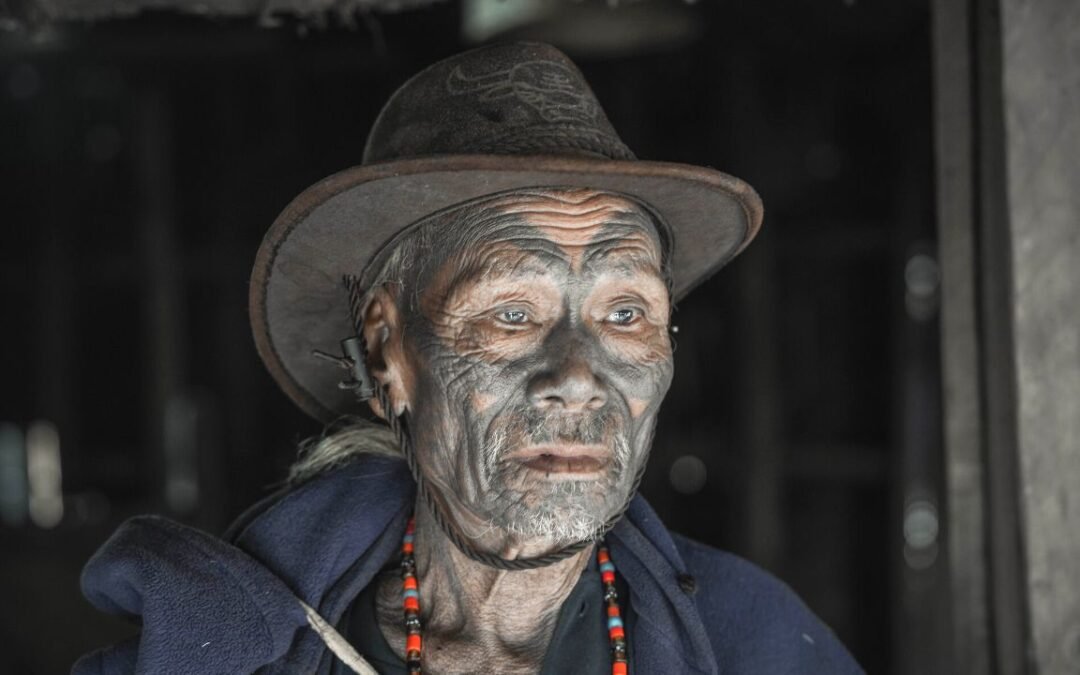
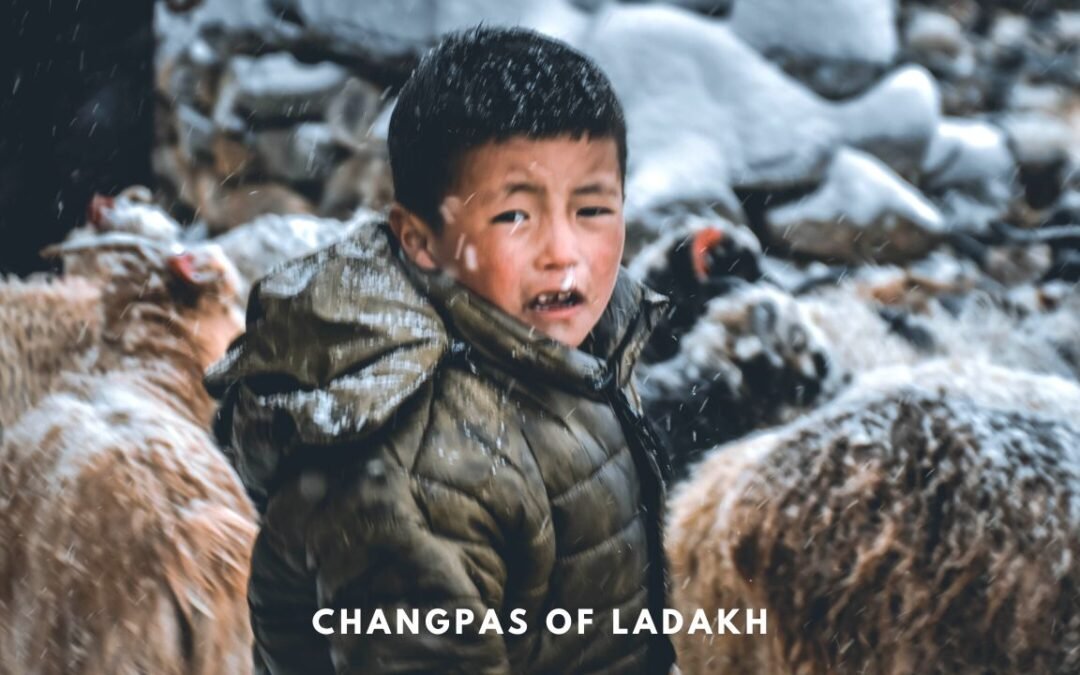

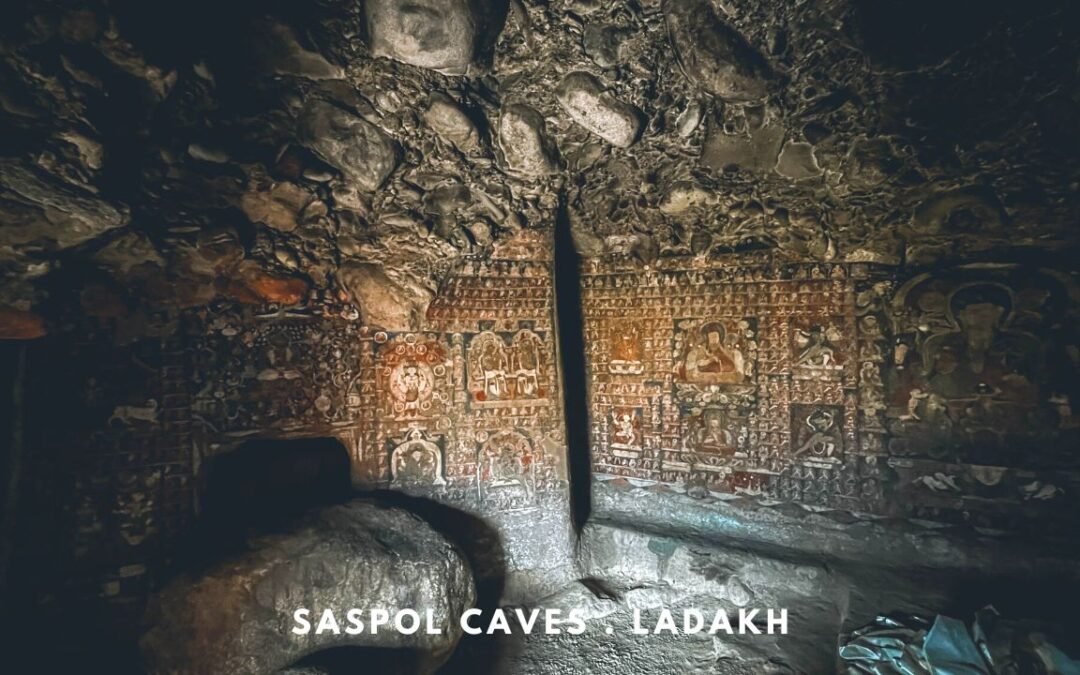


I love the idea of using art to spread awareness for threatened wildlife species. It’s good you gave descriptions of some of the animals. Many of them I have never heard of. The Horsfield’s Tarsier does look like a mythical creature!
Thank you Elizabeth, Even I had not known many of them before I visited the place. I wrote about the ones that I really loved.
A very interesting read, Amrita and Agni. I clearly had no idea of the Pillars of Sabah in Malaysia and I am glad I found something so culturally relevant through your blog. I am pretty impressed how the community and government have worked together to give old, derelict places a vibrant character. Pillars of Sabah 2.0 is especially interesting for its focus on wildlife conservation. I love the 3D effect on the corals. And the dugongs are definitely kissable.
Thank you, Soumya! Pillars of Sabah are so beautiful, yet one of the lesser visited places in KK. Hopefully, more people will visit the Pillars in later days.
I like Graffitti and I don’t miss a chance to visit such places. I love the bold messages it displays and sometimes the intriguing ones that make you think what was going on in the mind of the artist. Pillars of Sabah 2.0 look absolutely beautiful and the message of wild life conservation is loud and clear. The Horsfield’s Tarsier, Dugongand the Binturong look very cute. I love the colourful corals as well. Art has a language of its own, isn’t it?
Thank you Shaily! Yes, I absolutely agree that art has its own language, its own way of delivering a message. That is what makes it so beautiful!
Such a beautiful and elaborate description, loved reading every word of it.
This surely is something not to miss for any tourist.
Thank you Sanjay!
What a unique place indeed! Too bad this place wasn’t around when I visited Sabah in 2017m otherwise I would surely check it out. If this is the second project by Hong Yi and Rahman tho, what was the first one?
Thanks Daniel! Yes, it was a project started only in 2018. Never mind, next time you are in Sabah, do check it out.
Daniel, the first one was Pillars of Sabah which had the faces of eminent personalities of Sabah who had made a considerable contribution towards the place.
This is a great idea and it is beautiful. I hope that through this initiative we get to inspire more people. Kudos to artist, Red Hong Yi for this wonderful project.
Thank you Clarice. 🙂
You guys always share the best content. Love reading all your posts! Keep up the wonderful work 🙂
Jessika
https://www.ceraonline.org/
Thank you Jessika!
I love the idea of having art with a purpose!! This is so gorgeous and such an amazing idea. I had never heard of this before, but it makes so much sense. The artist did an amazing job!
Thank you Chloe. I am glad that you liked the post.
I’m a sucker for public art and this is just awesome!
Too bad the planned building never took shape, but its amazing how the local artist converted the foundation pillars to such a marvelous piece of art!
Quite an interesting concept to feature these endangered animals. First it attracts people, then it creates awareness! Hats off to the artists.
Thank you so much! Pillars of Sabah is indeed a unique concept.
Pillars of Sabah in Kota Kinabalu are really an unique piece of art in Sabah. I love art and colorful quirky things then this post really makes me more interested in this place. I loved how they showcased wildlife and made it an integral part of this whole concept. What a great way to raise awareness for preserving ecosystem.
Thank you Yukti. Pillars of Sabah 2.0 has indeed done a great job in raising awareness.
Beautiful article.
I will be in KK next week and staying at Gaya Street – should be nearby.
When researching what to do here, I came to know about the Pillars of Sabah. It was interesting but more of a “If I have time, will check this out”.
After reading your blog and seeing all the pictures however, it is now a definite must do!
Thank you so much for your kind words! Hope you have a wonderful trip.